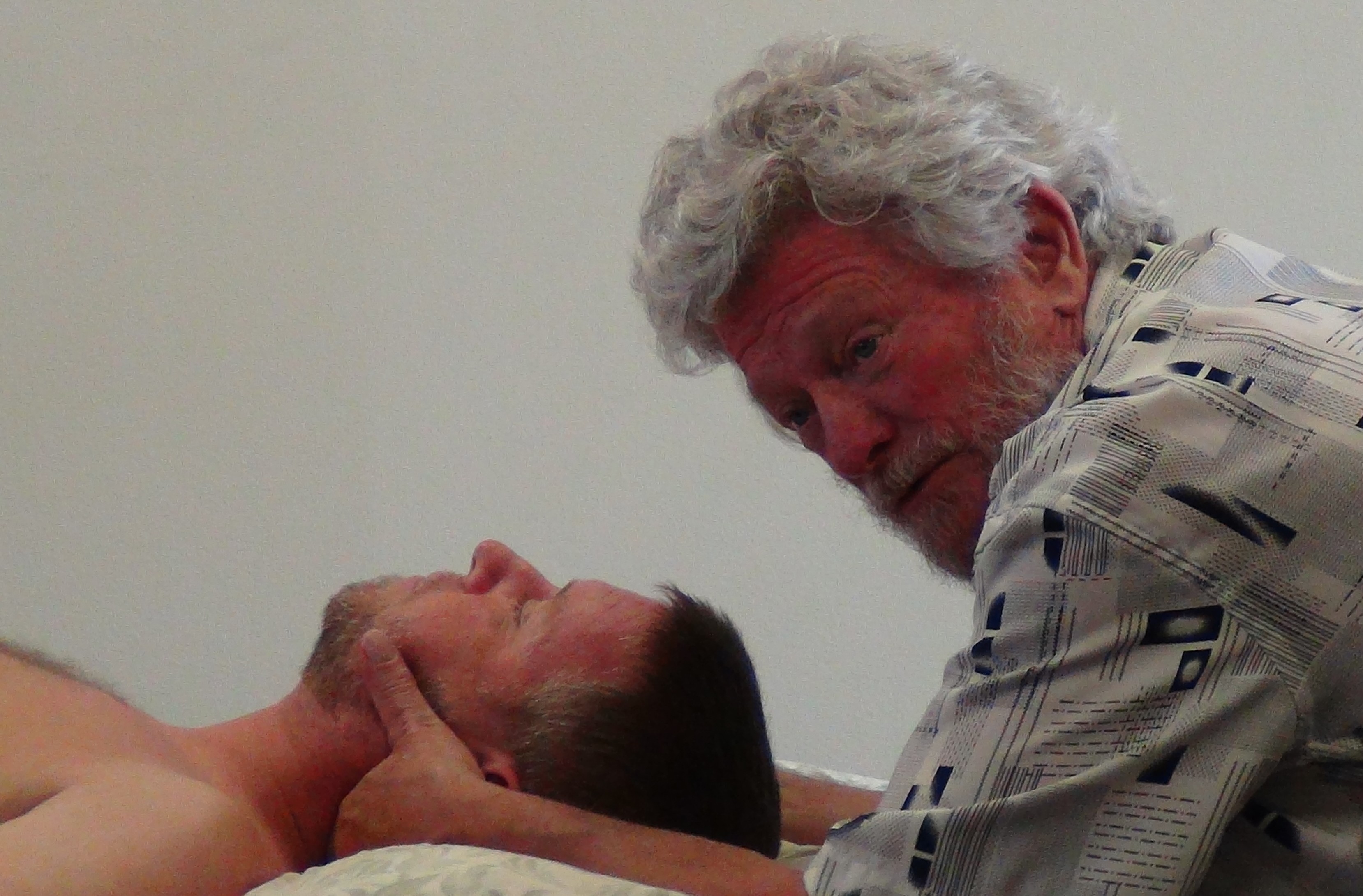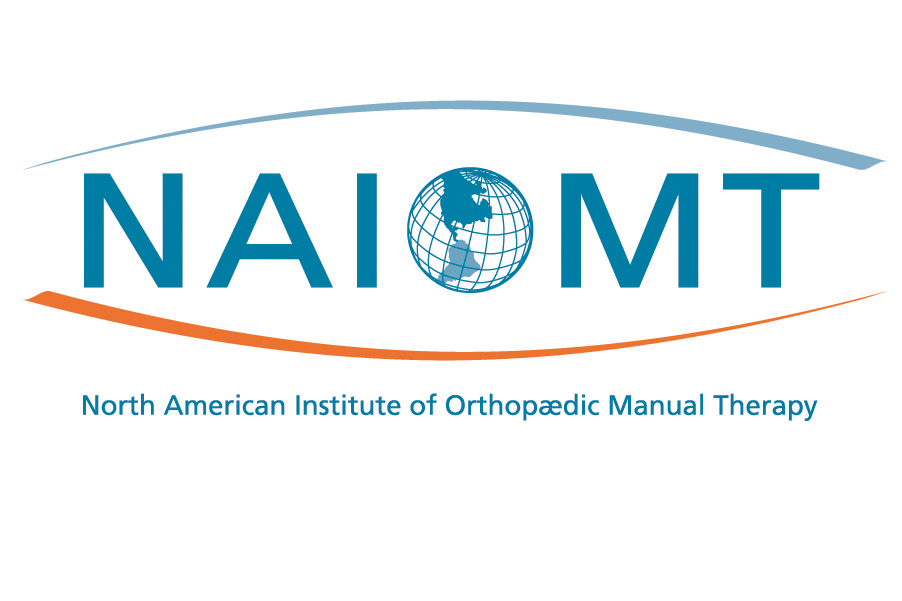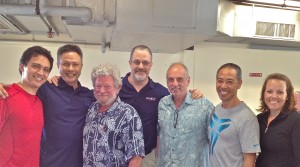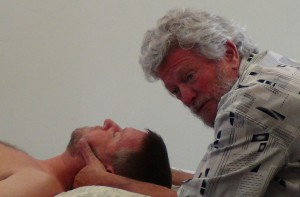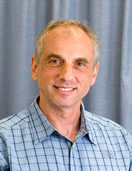Chatting with Erl Pettman
On May 17th, I was fortunate enough to spend some time with one of my mentors, Erl Pettman , PT, MCSP, MCPA, FCAMP, co-founder of NAIOMT (North American Institute of Orthopedic Manual Therapy). Erl has been coming to Hawaii for the past 8 years to teach NAIOMT courses. In addition to being a Senior Faculty member with NAIOMT, he has been a certified manual therapy instructor for the Olaf Evenjth system since 1990.
I first met Erl in 2007, when I started taking NAIOMT courses. Since then, I’ve taking all four NAIOMT Level courses and have been lucky to have Erl as my instructor. He has made a tremendous impact on my career and continues to be influential toward my performance as a physical therapist and clinical instructor. I’ve always wanted to sit down and chat with him about his life, career and thoughts regarding our profession and am honored to have Erl as part of my first F&L blog interview.
Here’s a transcript of our conversation:
Mark: I’m just going to ask you a few casual questions to get started.
Erl: Yeah, that’s what the police always say (laughs).
Mark: Haha. You has been a mentor to me since I attended the Level I class NAIOMT course. Thank you so much for joining us today, Erl. I know that you’re here this week to teach a Level I NAIOMT course. How is it going?
Erl: Very well. Good group. It’s one of the larger groups we’ve had for a long time. Good interaction with the old group and some newbies.
[one_half]
Mark: Let’s start off by talking a little about your professional career. You graduated from Nottingham School of Physiotherapy in England in 1972. How was your experience as far as physical therapy school is concerned?
Erl: I think the most valuable part was the emphasis on anatomy. And that’s followed me throughout my career. From a disappointment point of view, it was the lack of emphasis on anything orthopedic. There was no mention of manual therapy at all. So I had to catch up with it once I qualified.
[/one_half]
[one_half_last]
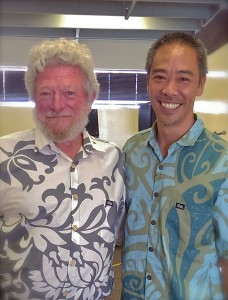
[/one_half_last]
Mark: And what was it that drew you to become a physical therapist? What motivated you to choose Physical Therapy as a profession?
Erl: Nothing motivated me, it was pure accident (we both laughed). My father hired a physio for one of the jobs he was a manager for. And I had quit school and was just working. He was concerned that I wasn’t going to get back into academics, so he suggested I look into physiotherapy (aka physical therapy). And that’s how I got into it.
Mark: So you’re first job was as a staff therapist in a hospital in England. What were your memories of that first job?
Erl: Mostly the post-surgical side. Because in England, we were involved in a lot of chest care. And that was very big. It was mostly neuro and post-surgical. So, not my favorite.
Mark: Do you have any funny memories of your first year as a physio?
Erl: No that was a long time ago, I’ll have to think about that one.
Mark: In 1982, you, Cliff Fowler and Jim Meadows founded NAIOMT. Tell me about that.
Erl: I got this idea in my head that we could start this North American institute so I approached Cliff, Jim and later, Ann Porter Hoke and the late David Lamb to see if they would help me get it going and help me teach. And Diane Lee was originally with us too. So there was quite a number of people that helped us establish the orthopedic division in Canada. And they ended up teaching for NAIOMT.
Mark: What were your thoughts in forming the organization? What drove you guys to have this educational model?
Erl: We had a number of friends in the United States who wanted a much more structured system that they could find in the U.S. and they looked at the Canadian system which was very structured and not biased to anybody. Nobody’s name was connected to it but we had levels, we had exams, and a system set-up. So they asked us to come down and start a similar system. So initially, it became known as the Canadian System, then eventually we changed it to the North American (Institute of Manual Therapy).
Mark: The last time you were here in February, I watched you do an examination for the Level Three Examination. It’s considered one of the toughest exams as part of the certification of NAIOMT. What makes it so difficult?
Erl: The level 3 exam is clinical reasoning and contains a lot of biomechanics. The emphasis is on why you would do something and what’s your reasoning for the assessment and treatment given, so it’s not just a practical exam which is why a lot of the people find it extremely challenging. But our reasoning is because it’s a competency exam, a reasoning exam and reckoned to be one of the tougher exams of any system in North America. It’s still largely based on the Canadian system, but even a little tougher than that one.
Mark: Yes, you’ve said that when I was going through the courses, NAIOMT was one of the toughest certifications in manual therapy that one can go through. Besides that exam, what else makes it so tough?
Erl: It’s the only system that has an examination at every level and there are a number of courses that you have to take to get through those test procedures. For example, there are ten courses, each with tests on level one, level two, etc… In many cases, in the United States, you can get certified after a few days. But in NAIOMT, it’s going to take you a few years. And that’s a BIG difference. And of course that makes it not popular with everybody.
Mark: After years of doing quite a few examinations, you must’ve seen some interesting things happen. What are some examples of the interesting or humorous things you’ve seen during the exams?
Erl: Well, people faint (laughs) so you always have to be ready for that! One of the most common responses in the exam is when people can’t speak. So we’ve learned over the years that making people feel comfortable is a huge part of becoming an examiner so that they don’t freeze up. Some people can’t remember anything for their exam when they’re going through it. Just a blank. So you can really see how much stress people can be under when they’re going through the exam. We’re very careful in choosing our examiners so that they’re capable of first making people comfortable and then able to ask them questions that will get the most of out of them.
Mark: Great. Everyone has asked me to ask you this question. They say that they feel like you’ve got or you’ve stated that you have a photographic memory. First of all, do you feel like you have a true photographic memory? And second, when did you know that you had that gift in you?
Erl: Well, I know people with a true photographic memory and I don’t have what they describe as a true photographic memory where you can just look at a page and remember it. But what I do have is a real retentive memory which is a better way (to describe it). I only have to read something once or be told something once and it’s pretty much in there forever.
Mark: Have you always had that?
Erl: Yeah. I think that’s been a feature since school. I didn’t always use it in school as much as I could’ve (laughs).
Mark: I as well as many others, view you as an icon in our profession and you’ve had a huge influence on my professional development. Who has been a major influence in your professional development?
Erl: Apart from my teachers Kaltenborn and Evenjth, the main people were the ones that started the orthopedic division of the Canadian system. The first one I ran into was John Olden. And as I mentioned, we knew nothing about orthopedics at school so he was amazed at my ignorance at manual therapy and was so affected by it, that he actually gave me his brand new copy of Textbook of Orthopedics by James Cyriax and that opened my mind like crazy. Then my association with Cliff Fowler, who’s become more like a brother than a friend. From a clinical perspective his innovative soul and mind has really turned me on. And Dave Lamb was probably the biggest influence in teaching and I could listen to him over and over again for hours. It’s his passion to get people to learn and enjoy work. Those three people have probably influenced me the most over my career.
Mark: One of the things that I’ve realized about our profession, is that more and more our worth as professionals is dictated by others not in our profession. Where do you see our profession going because of this trend?
Erl: If I look at the profession internationally, I see a trend where we are going to be unquestionably the next line of medical specialty. I think we’ve got the history, the background, and gradually we’re getting more and more researchers in the field. And our profession as a whole is getting far more scientific. So I actually think we’re getting prepared through our historic development to be the next specialist. And I think our title will be physical medicine specialist.
Mark: Where do some our professionals need to be coming from? Do we need more people invested in the clinical research or perhaps the administrative government side?
Erl: I think we need everything (laughs). Traditionally, physios have lacked PhDs and clinical researchers. I would like to see the PhDs be more clinically directed because sometimes they aren’t. But again, we’ve been very poor in political involvement. I think efforts in Washington show that when PT populace gets involved you can actually change the law and change the way we are viewed as a profession. So I think of those aspects. I think we’re doing extremely well from a clinical, investigative perspective and inventiveness is a strength but I think those are two of our major weaknesses.
Mark: Do you think it’s a product of what our professional educational system? Whenever I take students, I’m often surprised by the limited progression of the education. Do you see that as well?
Erl: Yeah, obviously as a teacher you are aware of the weaknesses of the post and pre-professional systems but I’m also aware of the fact that they have limited time and resources, so they have to try to develop a framework for a physio to be developed. So really when they come out, it’s really unrealistic to expect them to be expert clinicians. I think what we need is to train people that have that…that future to be expert clinicians. So, if there’s anything I’d like to see, it’s an emphasis on biomechanics, because that’s my bias (chuckles).
Mark: Are you familiar with some of the more recent systems like SFMA?
Erl: Yes, I’m familiar with them and for some instances I’ve run into some of these PTs and always been enriched by them because they have a different opinion. But from a change of perspective from a professional, it’s a little too late for me. You know that saying about an old dog learning new tricks (laughs).
Mark: So at this point of your career, what do you feel you have a lot left to do? What is it that motivates you to teach?
Erl: I think when you mentioned about the way my brain works, one of the other features I have is a very three- dimensional mind. And I can see biomechanics, human biomechanics in a three-dimensional perspective. That’s not something that’s shared by a lot of people. One of the things I’ve dreamed about and hopefully when I get less busy in the clinic, is to be able to set up a computerized system of teaching biomechanics in a three-dimensional manner. So if there’s anything left to do, that would be it.
Mark: That’s interesting because when I graduated from PT school, my graduate thesis was a 3D presentation on cervical biomechanics. And this was when 3D animation had just come out and I taught myself how to create short videos on how the cervical spine moved with cervical flexion, extension, sidebending and rotation. I thought that’s where the profession would go as far as the teaching part of it but it really didn’t expand that way. I mean, there have been some programs that have come out with 3D animation but there hasn’t been as much change as I expected.
Erl: No it hasn’t and I think it’s because a lot of people don’t view anatomy and biomechanics in three- dimensional perspective and if you do, you’re very lucky. I think because the vast majority of people still see anatomy in a two dimensional thing from Gray’s Anatomy. That’s one of our biggest challenges. And once we have something that people can utilize, even on the undergraduate level, I think that’s where the interest will be. But I think that people can’t get that view. But you’ve never shown me that.
Mark: Haha, I’ll have to dig that up somewhere. So you’ve been coming here since 2007 when I started taking the level I and you’ve been coming back every year since. What is it about Hawaii that you are so fond of?
Erl: Well, obviously I’ve built up a huge circle of friends in Hawaii over 20 something years. It’s a beautiful place to come but it’s also a nice atmosphere. It’s just been great to be a part of a developing professional culture that is being created in Hawaii, almost the embodiment of what NAIOMT wants. If we could create in the rest of the U.S. what we’ve created in Hawaii, we would be very, very happy. And I’m not just talking financially; I’m talking about from a professional point of view and our impact on the future of the profession.
Mark: Alright, I just have one question left. I love to read and I’m always reading two or three books at a time. What books would be the biggest influences on you? They don’t have to be physical therapy related, just any book.
Erl: Any book?
Mark: Any book.
Erl: Including Dean Koontz?
Mark: Sure!
Erl: (Laughs) Obviously I don’t have any obvious ones ‘cause I can’t think of anything in physical therapy (laughs). But unquestionably, Gray’s anatomy has to be a favorite and I still read that and I still get caught reading that at lunch time. Some of the others, the new books on pain…Dave Butler’s Sensitive Nervous System. And probably I think Diane’s book on her approach to therapy especially about her approach to treating the pelvis. I always like the detective books, books on crime…
Mark: Like Sherlock Holmes?
Erl: Yes, like Sherlock Holmes (laughs).
Mark: Well I want to thank you for allowing me to pick your brain. Hopefully we can do this again.
Erl: Yes, thank you.
References:
Eidetic memory. (2015, May 20). In Wikipedia, The Free Encyclopedia. Retrieved 07:36, June 9, 2015, from http://en.wikipedia.org/w/index.php?title=Eidetic_memory&oldid=663272164

